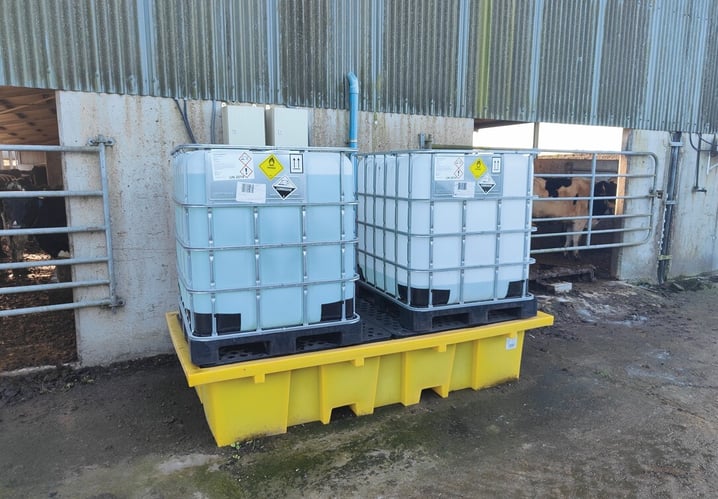Strathroy Dairies
GlasPort Bio has partnered with Strathroy to bring GasAbate to a selection of its farmers. On this page we will cover the following:
- Benefits for the environment and farmers
- How GasAbate works to reduce emissions
- How emissions data is captured
- Steps involved with getting GasAbate installed
- A form to allow you start the process



ENVIRONMENTAL BENEFITS
Reduce emissions
% less methane
% less hydrogen sulphide
% less ammonia
FARMER BENEFITS
Save time & money
GasAbate is a completely hands-free system with no farmer input required. It is more than a climate solution - it's a farm performance tool that helps you:
✓
Reduce emissions
✓
Lock in valuable nutrients, reducing chemical fertiliser demand
✓
Reduce odours & improve air quality
✓
Reduce slurry agitation time
✓
Generate more energy from slurry
✓
Stay ahead of regulations
HOW IT WORKS
GasAbate & emissions
Methane
Methane is a short-lived but highly potent greenhouse gas, with a global warming potential more than 80 times greater than carbon dioxide over a 20-year period. Globally, livestock manure management accounts for a significant share of agricultural GHG emissions. These emissions are primarily methane, released during anaerobic decomposition in slurry storage. Reducing methane emissions is now recognised as one of the most effective strategies for achieving near-term climate cooling.
GasAbate
GasAbate temporarily suppresses methanogens - the microbes responsible for methane production - by inducing a dormant state. This prevents the breakdown of organic matter during storage, effectively locking in the methane potential of the slurry and retaining crop nutrients. Unlike acidification, which permanently alters slurry chemistry, GasAbate’s effect is reversible. Once the additive degrades, microbial activity resumes, allowing the slurry to be used as a high-yield feedstock for anaerobic digestion (AD).
Proven results
GasAbate can reduce methane emissions from stored cattle and pig slurry by 80%. In intensive dairy systems, this equates to a reduction of nearly 1 tonne of CO₂-equivalent (CO₂e) per cow per year. On a 200-cow farm, that’s 200 tonnes of CO₂e annually - equivalent to the emissions from driving a diesel vehicle around the globe 185 times. In swine production, the impact is even more substantial. GasAbate has been shown to reduce emissions by 1.84 tonnes CO₂e per sow place per year, or nearly 1,000 tonnes CO₂e on a 500-sow unit.
MEASUREMENT, REPORTING & VERIFICATION
Real-time emissions data

GasAbate installation causes no disruption to farming operations and can be installed with animals indoors

Our built-in data-gathering system gives live information on slurry levels, additive usage and saved emissions

Additive levels are monitored remotely by GlasPort Bio with new deliveries ordered automatically if running low
INSTALLATION STEPS
Getting GasAbate
GasAbate can be installed into new or existing slurry tanks. The process is as follows:
- You fill in your farm's details on the form below.
- We use this to complete initial drawings for your tailored installation.
- We visit your farm to verify the details and run through any queries you might have.
- The installation date is agreed.
- The installation is completed by GlasPort Bio and the system is put live.
- Once live, the additive is added automatically to slurry tanks and slurry and additive level details are passed to our monitoring system.
- When the additive is running low, we will be notified by the system and will arrange for a new delivery.

FARM DETAILS
GasAbate questionnaire
